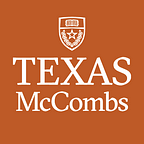Will You See the Doctor Now?
Two landmark studies use patient no-show probability to create a scheduling model that minimizes patient wait time while maximizing profit.
Based on the research of Kumar Muthuraman
Anyone who’s gone to the doctor has walked into a waiting room to find it packed with other patients, and the realization hits you that it may be a while before you’re seen. There are several reasons why a waiting room could be overcrowded — from doctor tardiness to an emergency that caused a delay — but a primary reason you might have a long wait at your next appointment is because other patients don’t always show up.
This might seem counterintuitive, but clinics can have patient no-show rates as high as 40–50 percent, so they overbook to compensate. But clinics typically don’t account for patient variability when they overbook, which means that an overbooked appointment slot could lead to profit loss if none of the scheduled patients arrive — or overcrowding if all of them do.
Research by McCombs Professor Kumar Muthuraman, along with Purdue University co-authors Mark Lawley and Santanu Chakraborty, presents a scheduling model that assesses an individual patient’s no-show probability, selects the best available appointment time for that person, and computes a scheduling stopping point for the day — all to ensure minimal wait times and maximum profits.
Clinics generally schedule patients arbitrarily, by matching patient preference with schedule availability. Then, they include an overbooking criterion to account for no-shows by simply overbooking all appointment slots by a certain percentage (say, 20 percent). This system is often ineffective, however, because some appointment slots don’t need to be overbooked; adding more patients will cause delays and increased wait times. For other slots, 20 percent overage could be insufficient, meaning there will still be clinic inactivity. It is true that on any given day, some patients likely won’t show. The trick, Muthuraman argues, is to know which patients will fail to show up and when — and then put that information to use.
“There’s no way a human can intuitively optimize these things. It’s too complicated. You must use a mathematical model and computers to solve the problem and suggest schedules in real-time.” — Kumar Muthuraman
Muthuraman and his co-authors did just that by developing a probabilistic scheduling algorithm that is efficient enough to be implemented for actual clinic use. The model computes each patient’s no-show probability (based on past history, weather conditions, day of the week, time of day, or any other variables) and finds the best appointment slot in real time as soon as the patient calls in. The scheduling model can produce an optimal appointment time in seconds, and it also calculates a natural stopping point and begins assigning times on other days to avoid overcrowding. The model allows for patient preference, as not all suggested times will work for all patients, as well as staff override to account for urgent cases that need to be seen immediately.
By using patients’ no-show probabilities, the scheduling model can strategically overbook certain slots with patients who have a high no-show likelihood, with the aim of ensuring a certain minimum number of patients actually arrive for their appointments. Those overbooked slots can then be followed by appointments that are not overbooked and are reserved for patients with historically low no-show rates. Then, if there is overcrowding, those later appointment slots are able to accommodate a few extra patients without leading to overtime and reduced profit.
“The only number schedulers can reasonably optimize is how many people to schedule in a slot. They cannot figure out what kind of probability mix to put in a slot or estimate the probability of somebody showing up. That’s the big difference. They usually come up with the right number of people to schedule, on an average. But on average doesn’t work. The variation from the average is what gets you, and that’s the thing they miss,” explains Muthuraman.
Practical Implications
The scheduling method developed by Muthuraman and his colleagues is being implemented within a GE Centricity Electronic Medical Records system by a non-profit organization called the Alliance of Chicago Community Health Services. Through this group, more than 300 physicians will be using this probabilistic algorithm to efficiently schedule more than 250,000 patients across eight states, including Texas.
Simulation results for a typical clinic with 10 physicians indicate that the scheduling method accommodates 7,500 more patients per year along with 50 percent less overtime for physicians, while decreasing average patient waiting time to less than 10 minutes.
Muthuraman and his co-authors are now embarking on new research that will adapt this scheduling model to accommodate larger diagnostic clinics and hospitals.
“A Stochastic Overbooking Model for Outpatient Clinical Scheduling with No-Shows” was one of the “Top 10 Most Cited Papers” from 2008–2010 in IIE Transactions.
“Sequential Clinical Scheduling with Patient No-Shows and General Service Time Distributions” received the Best Paper Award from IIE Transactions in 2010.
Story by Adrienne Dawson
